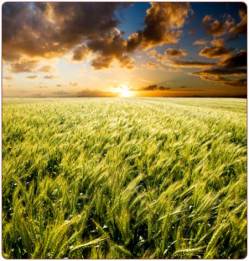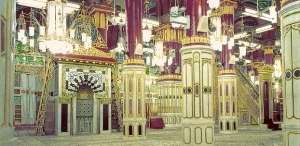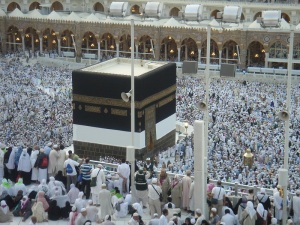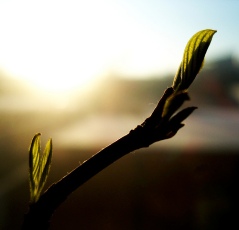
Previous post in this series: Part 1
Intention
One of the most important principles in Islam revolves around motivation – a person’s intention for doing something. As the famous, reported saying of the Prophet Muhammad (peace be upon him) goes:
“Actions are according to intentions…”
This means that, in Islam, a person will be judged, and recompensed, according to the motivation behind what they did*. So for Muslims, even the most mundane or seemingly un-spiritual acts – like eating – could be consider an ‘act of worship’, if done with the intention of pleasing God (either directly or indirectly).
The concept of ‘worship’ in Islam is extremely broad – and not limited to just physical rituals of prayer, and observable acts such as giving charity. Basically, in Islam, anything a person does, if done to please their Creator (and within the bounds of permissibility set by Islamic law) is considered an act of worship. The broadness of this definition makes sense when one considers the purpose of man’s creation – as related by God in the Quran: God has created humankind to worship Him (Chapter 51, Verse 56). And if that’s our purpose, it wouldn’t be fair to expect our entire lives to be spent in just specific, ritualistic acts of worship.
With this importance of intention in mind, it makes sense that when it comes to Hajj, the foundation – the intention – must be good, or else you’re wasting your time, energy, and money.
For my journey, my intentions were threefold:
- to fulfill the obligation of Hajj placed upon me by my Creator (since Hajj is an obligation, if one is able to go)
- to be completely forgiven for my lifetime of sins and mistakes (which is a promised consequence of the journey), and
- to be spiritually purified and strengthened to such a degree that I could make the important life changes and improvements that I wanted to make – thereby living a better life for the rest of my days
Change
The last point, especially, was immensely important. Positive change is something that we all aspire to – yet succeeding in that change is much easier said than done.
At various milestones in life – like the turn of a new year, or a birthday – humans tend to feel this motivation to want to make positive changes: to reduce or eliminate bad habits and negative qualities in their character, and strive to live a better life. And with these milestones often comes strength to implement such changes.
For a Muslim, the Hajj serves as the ultimate milestone – because it’s one that may not come again. And because of the enormity of the event in a Muslim’s life, Hajj serves as something of a treasure trove of strength, goodness, and lessons to take forward for the rest of life.
With ‘normal’ milestones, it’s natural that the motivation or drive a person has for positive change wears off over time. And, as per human nature – once that drive wears off, we often find ourselves reverting back to the same bad habits and ‘normal’ behaviours.
But with Hajj, that pattern is one that needs to be avoided – because it really is a once in a lifetime opportunity for most. So, whatever changes a Muslim aspires to with regards to this journey, those changes have to be permanent.
As mentioned in the opening post on this blog, it’s commonly said that Hajj itself is not the real challenge, but the real challenge is living that Hajj – i.e. taking those changes intended on the journey, and making them a reality for the rest of your life. It’s also said that one of the signs that a person’s Hajj is accepted by God is that they come back and live a better life – and not fall back into the same negatives that plagued them prior to the journey.
Preparation
For most things in life, it’s important to be prepared. For Hajj, it’s even more important – because this is the most important journey of a Muslim’s life. Along with the logistical arrangements – such as seeking accreditation from the relevant authorities, booking with a Hajj tour operator, and the standard travel routines such as shopping for the trip and packing – there are the personal and spiritual preparations, which are critical.
In terms of education about what the Hajj entails and what I’d need to do in terms of rituals, I supplemented self-study with Hajj classes – which ran at a local mosque for six months. On the individual level, I also undertook personal preparatory efforts – including a supplication list, which proved to be the most important step I took.
In Islam, supplication – or dua – is the act of asking God for what you need and want. It could be termed as ‘prayer’ – but it’s not the same as the ritualistic, five times a day prayer that Muslims make.
The latter is a set of physical actions – accompanied by mental focus and spiritual concentration – and is in the Arabic language. The former (dua) has a few etiquettes, but is essentially a personal conversation – or series of requests – that a person makes to their Creator. This is done in any language, and is the very heart of a Muslim’s religion – because it is the direct connection a Muslim has with their Creator. Islam has no ‘clergy’ or intermediaries between the worshipper and the Creator. It’s a direct link, where you speak directly to your Creator and open up your heart completely.
It’s a communication line that’s always open – and one that’s totally free of charge. No high cellphone costs involved 😉
Other preparations included finalizing my will (which should be prepared anyway, since death could come at any moment), and seeking forgiveness from all those I may have wronged in the past. This custom is an essential aspect of pre-Hajj preparation, because if I was to attain total forgiveness from God on Hajj (i.e. within the vertical relationship – between creation and Creator), I first needed to seek forgiveness from the people I’ve wronged in my life (i.e. the horizontal relationship – between myself and other creation). Forgiveness is a hard thing to ask for, but Hajj is a humbling journey – and this custom is something that sees the humility kick in even before departure.
Another pre-Hajj practice is the custom of ‘greeting’ the Hajjis (i.e. those going for Hajj) before they leave. This is a cultural practice – not a religious obligation. Here in Cape Town, it’s treated with all the fervour of a wedding. For the week before the Hajji leaves, the house is pretty much open to visitors at most times of the day (and late into the night too – even if you have young kids at home!). Family, friends, neighbours, and others all come to ‘greet’ you, wishing you well for your Hajj, asking you to pray for them, and giving you some money to help with the trip. Those who have been before share their Hajj stories with you and give advice as well.
Although this particular custom can be rather extreme in Cape Town, it’s one that does have a lot of good in it – for the sense of community it builds, and the way it reminds visitors of the Hajj and Islamic teachings.
Although my home became very chaotic at times due to this, it wasn’t as crazy as it could have been, and in the end, what stood out most in my mind was the very important advice given by friends who had been before, as well as the well wishes of the visitors.
Next up: The journey begins in the city of Madinah, Saudi Arabia.
Footnote for this post:
* With regard to recompense, or reward for intentions and deeds, Islamic teachings also convey God’s tremendous mercy in a principle related to intention: If a person intends something good, but ends up not doing it, it’s recorded for them as a good deed. And if the person actually goes ahead and does it, it’s recorded as ten times the reward of that deed. And if a person intends a bad deed, but then refrains from doing it, then this abstention is written as a good deed. But if the person goes ahead and does it, it’s written to their account as only one bad deed.
Image source: http://www.sambaelegua.com/wp-content/gallery/events/fall-harvest-pic-2.jpg










